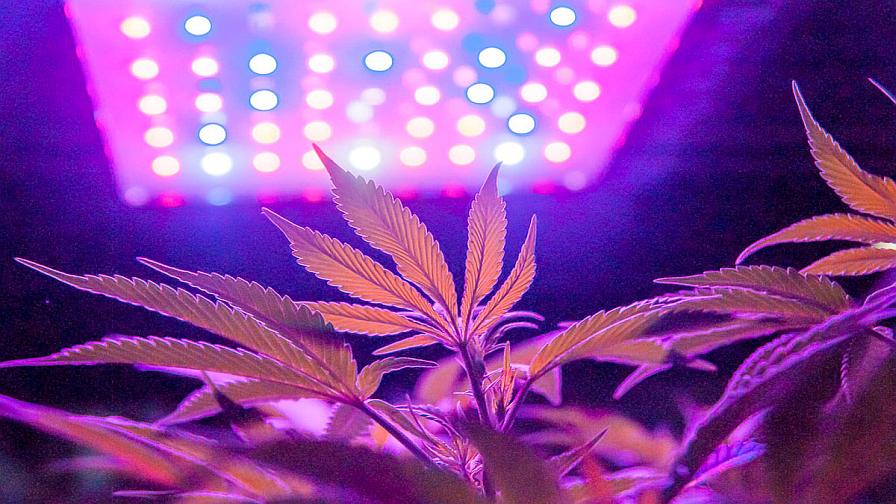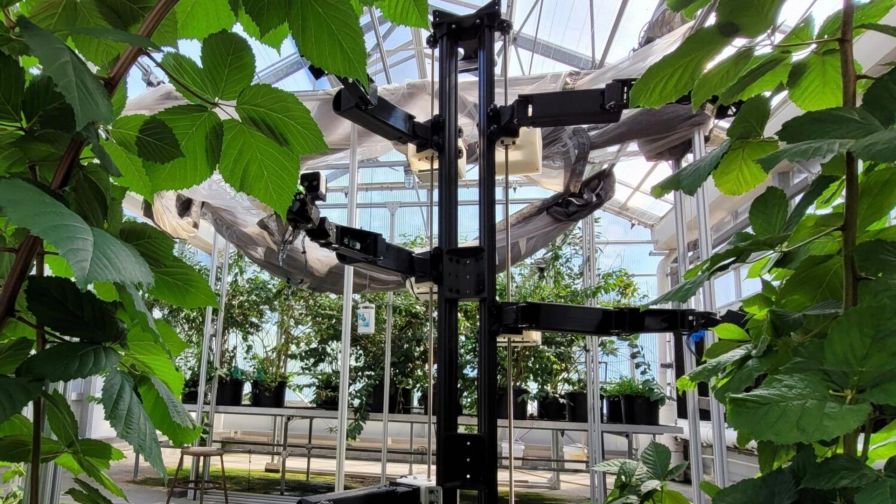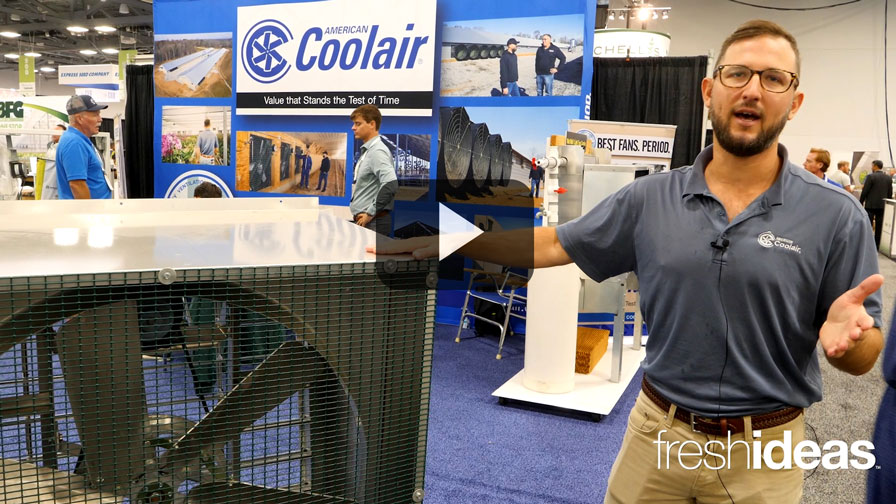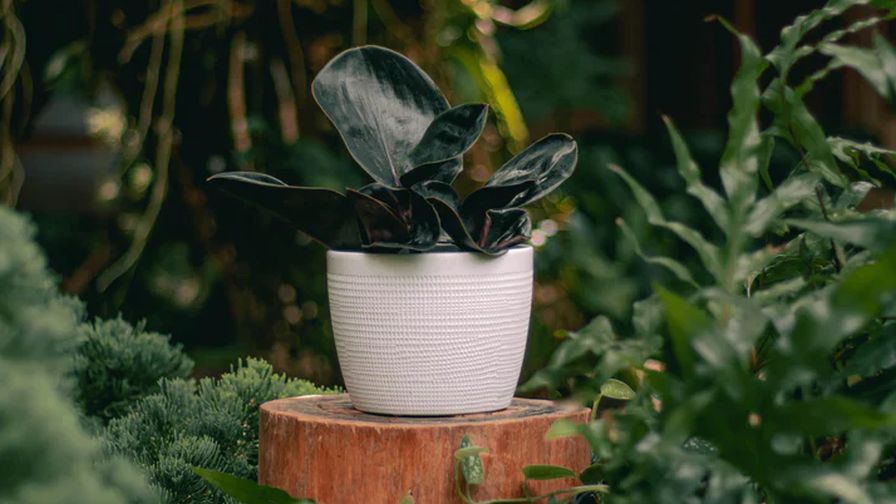Q&A: 3 Questions With Black Dog LED’s Chief Scientist

Photo Courtesy: Black Dog LEDs.
GreenhouseGrower.com recently caught up with Black Dog LED’s (Niwot, CO) chief scientist, Kevin Frender, to discuss his thoughts on whether growing cannabis at commercial scale truly is more “art than science,” what he’s learned as a lifelong exotic plant enthusiast and grower, and the convergence of Artificial Intelligence (AI) and Internet of Things (IoT) technologies in the LED space.
GreenhouseGrower.com: As someone still somewhat new to the legal cannabis world, I’ve heard that the act of growing cannabis is often considered more “art” than “science” among many longtime cultivators, that successful cannabis growers are closer to wine growers than your typical specialty crop farmer. Any thoughts there? How do you find the right balance between growing in a science-based manner while still having that green thumb grower intuition?

Black Dog LEDs chief scientist Kevin Frender.
Kevin Federer (KF): Cannabis is a complex living thing, and cultivating it is certainly a mix of science and skill. It isn’t that science couldn’t come up with a perfect procedure or recipe for cultivating Cannabis, but there’s still decades of research required until we get to that point. With crops like wheat that have been mass-cultivated for millennia and intensely studied for decades, science has provided a fairly prescriptive recipe for success. Even wine grapes are starting to be decoded by science, as researchers determine how environmental and micronutrient differences between one side of a vineyard and the other affect the flavor of the resulting wine. Cannabis cultivation has only really just now started to get studied in a rigorous scientific manner, which makes having an intuitive “green thumb” very useful at this point.
Acquiring a green thumb is an act of research and observation itself. Learning from past actions and mistakes is how we can get better at growing, even if we don’t fully understand all of the underlying reasons why. As scientific research fills in the details it will make it much easier for beginners to understand what is going on and how to fix issues, but for now, the “green thumbs” are just those people that have really paid attention to what happened when they tried various things in the past.
Where science can offer us tools, growers can certainly make great use of them. For example, you can send in a leaf for tissue analysis to determine if it is deficient in magnesium, and a lab can give you the results fairly quickly. However, even if the lab says the plants need more magnesium, just giving the plants more may not fix the problem. It could be that the soil pH is wrong to allow magnesium uptake through the roots, such that adding more to the soil won’t get any more into the plant. Or the soil could contain another element that is binding to the magnesium and preventing the plant from accessing it. Or the plant’s roots may be getting attacked by nematodes or insects, preventing it from taking up the nutrient even if the pH is correct and the soil is fine. Science offers tests for all of these things, but by the time you can get everything tested and figure out the real problem, the plant may be stunted or even dead- which is where having an intuitive notion of what may be wrong- earned usually by years of experience with stunted or dead plants- is very helpful.
GG.com: I understand that you have a lifelong hobby/passion for growing rare and exotic plant types. I was wondering if you’ve had any major learnings or epiphanies from that aspect of your life that have helped shape your philosophy on cannabis production?
A: Yes, I’ve been growing tropical plants indoors since I was three years old and planted a seed from my morning grapefruit; I managed to keep that tree alive for 35 years until it died because of something I failed to do when I was about 6 years old. (The roots had circled in a small pot, and essentially tied themselves in a knot around the base of the trunk; as the roots grew they strangled the plant entirely.) I still have a 12×15 foot ultra-tropical plant room in my basement where I have many 25+-year-old plants that have never seen the sun their entire lives and have been confined to a 3-gallon pot and a strict 5-foot height limit, yet can provide me with tree-ripened fresh fruit 365 days a year.
I have grown thousands of different kinds of plants indoors, from the common tomatoes, orchids, and cacti to the more exotic and demanding carnivorous plants, filmy ferns, and mangosteen trees. Each type has its own ideal cultural requirements and idiosyncrasies and getting to know and understand them requires a lot of patience, research, observation, and corpses along the side of the learning road. I’ve always had a green thumb, but I’ve also killed more plants than most people have ever tried to grow.
The three most important things I’ve learned are diligence, patience, and perseverance. If you can notice a problem early, it is much easier to correct it. But, don’t expect plants to respond to changes immediately either. We hear from customers all the time that they tried one thing on Monday and when that didn’t make a difference by Tuesday they tried something else, and a third thing on Wednesday. Even as a fast-growing plant, Cannabis often won’t show signs of improvement for several days or even a couple of weeks when you make a change; playing “mad scientist” and changing a whole bunch of things at once often causes more problems than patience. Finally, when things do go wrong – and if you’re serious about growing, it is just a matter of time before they will – learn from the experience, take whatever measures you can to prevent it from happening again, and start over with a new batch of seedlings or clones.
Cannabis cultivators are lucky in that most Cannabis plants are only grown for 4-6 months before they can be harvested. Mangosteen trees typically take 8-10 years from seed to start bearing fruit, so it is much more frustrating learning a lesson that kills the tree you’ve been nurturing for 7 years than with a plant you spent a few months with.
GG.com: Any thoughts on the growing trend of combining Artificial Intelligence, Machine Learning, and sensors, and integrating those technologies into the LED setup for agronomic data capture and remote crop monitoring in cannabis?
KF: Sensors can be incredibly valuable in helping to optimize your growing environment. The more data you have available to look at how your grow room is actually performing, the better. How you use the data is just as important though- some may not be relevant, and overreacting to a small imperfection can cause more damage than it helps. Trusting the data too much can also be problematic; we had a customer that had sensors logging temperature every 10 minutes, which also happened to be the cycle of their thermostat. So while the temperature data looked more or less perfect, they actually had 10-degree temperature swings in their grow room every 10 minutes, which was stressing the plants.
AI may eventually fix these issues, once it becomes smart enough. In these early stages of AI, it is best used as an advisor- a piece of advice to take into account when evaluating what you need to do in your grow. However, AI is still at a very early stage and I personally would not trust it “running” my grow. Telling me that the temperature is too warm is great. Suggesting that I need more magnesium in my plants is helpful, but as I discussed earlier just having it dump more magnesium on may not fix the problem, because it may not know of all the possible reasons why the plant is deficient.
When AI gets developed to the point where it can reason on its own with the same skill as a “green thumb”, it will become a great tool for completely automating cultivation. It may also choose to rise up and overthrow humanity at that point, so it could be a mixed bag.
In the meantime, in an advisory capacity, sensors and existing AI can be very useful in cultivation facilities.










